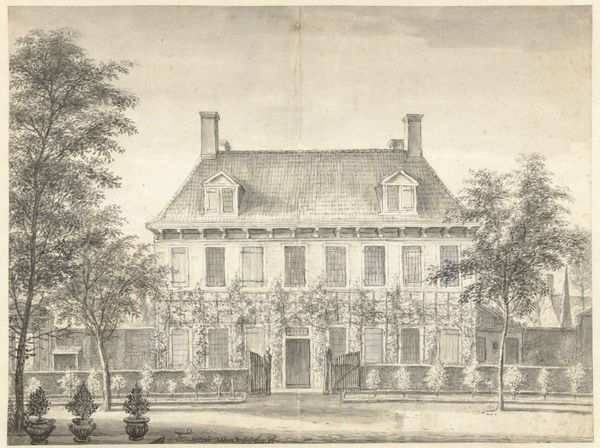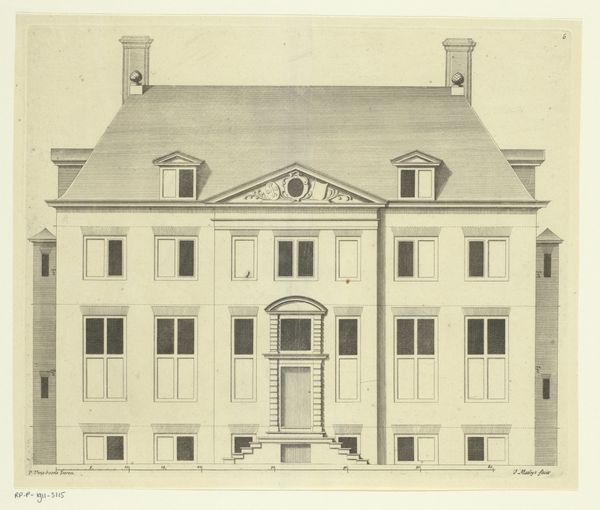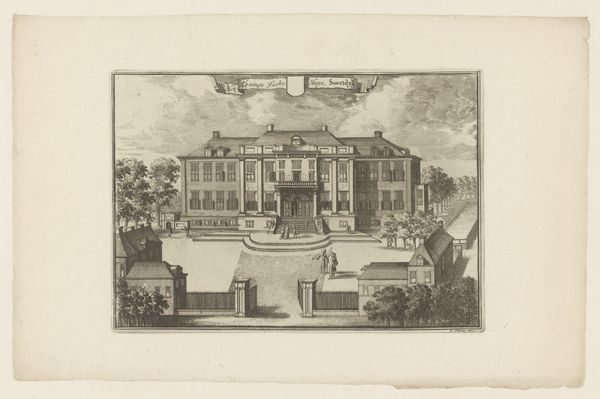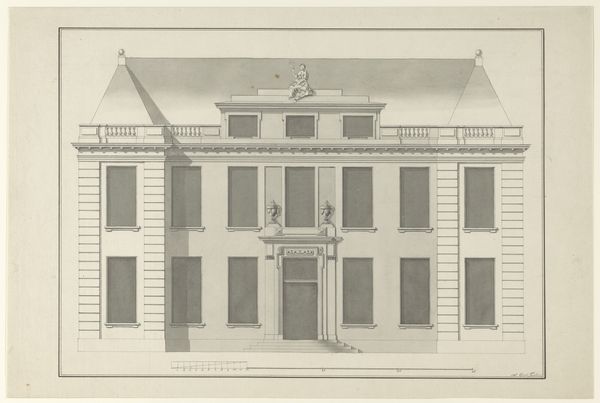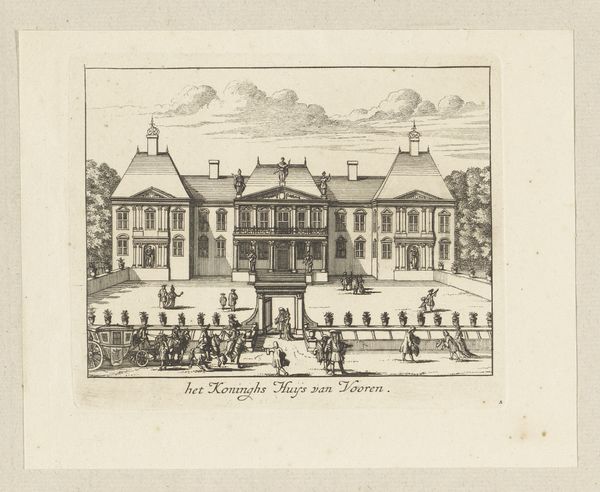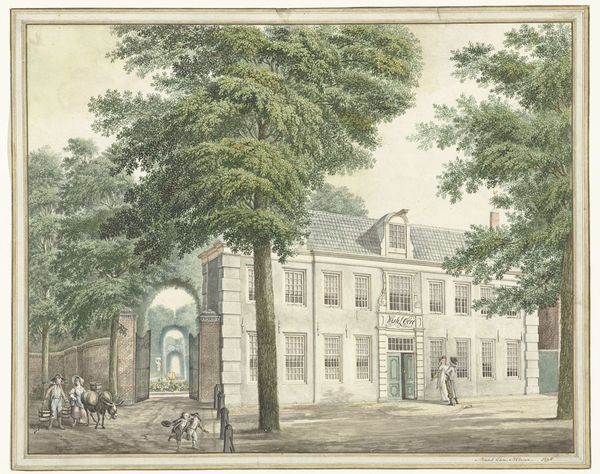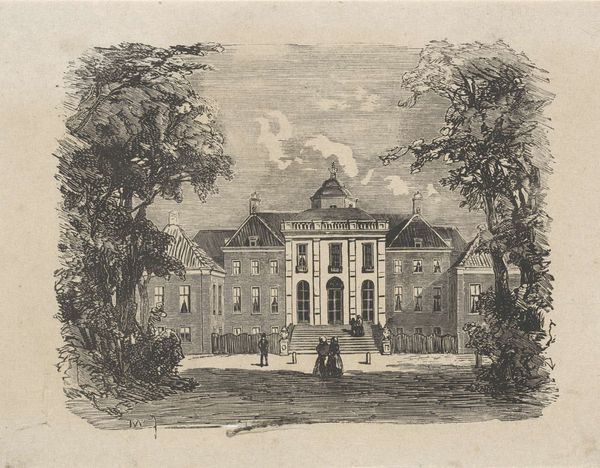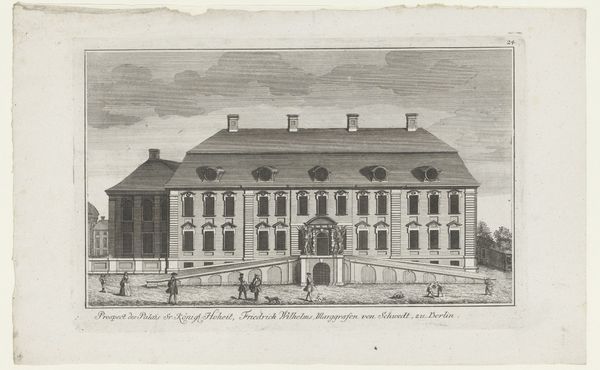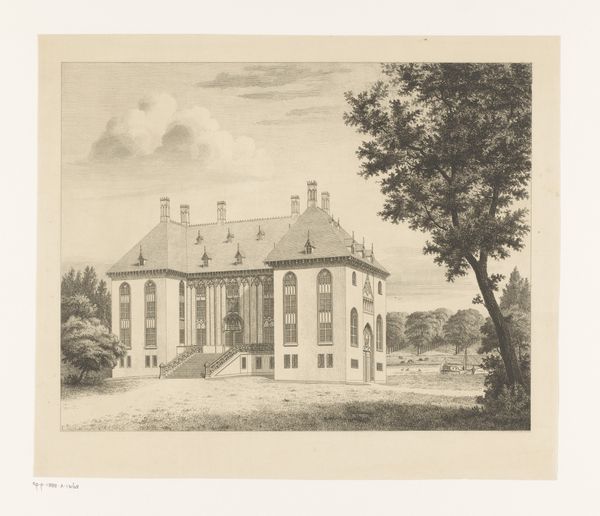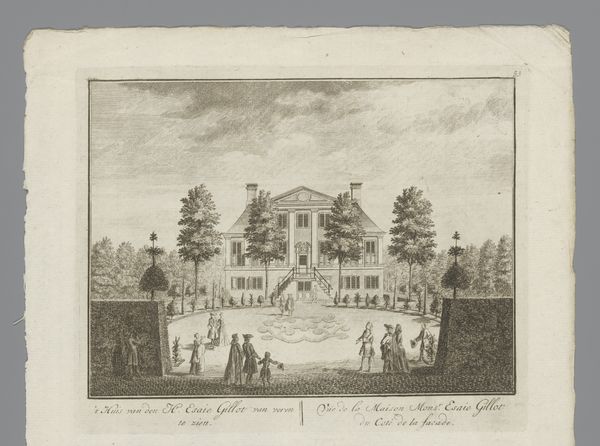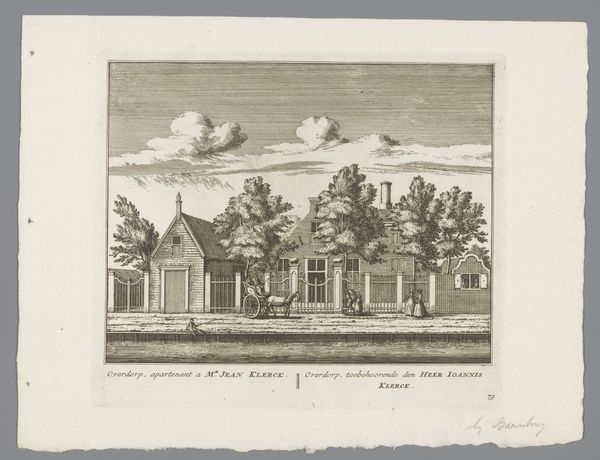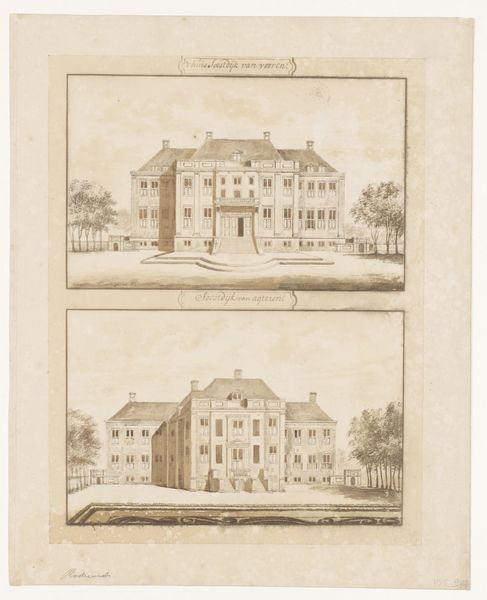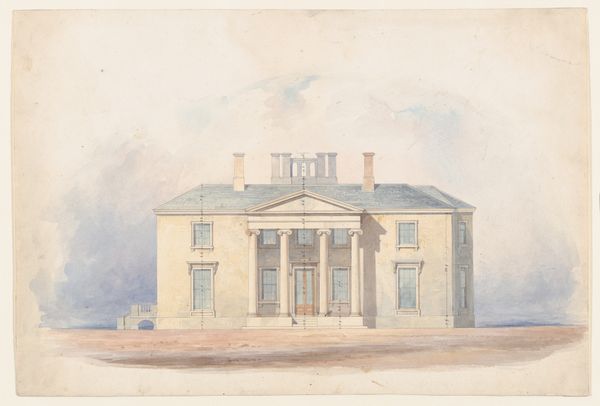
Gartenanlage mit Taxushecke und einem Haus zwischen zwei Bäumen
0:00
0:00
drawing, paper, watercolor, ink, architecture
#
drawing
#
dutch-golden-age
#
landscape
#
paper
#
watercolor
#
ink
#
geometric
#
classicism
#
architectural drawing
#
architecture drawing
#
14_17th-century
#
cityscape
#
architecture
Copyright: Public Domain
Curator: This serene composition before us, titled "Gartenanlage mit Taxushecke und einem Haus zwischen zwei Bäumen," or "Garden with Yew Hedge and a House Between Two Trees," comes to us from Isaac de Moucheron, a name synonymous with Dutch Golden Age landscapes. This drawing, realized in ink and watercolor on paper, exemplifies his skill in rendering architectural scenes with a painterly touch. Editor: Immediately, I’m struck by the tranquility. It's like a still moment lifted from a dream, or maybe one of those lovely stage sets where you just *know* something delightful is about to happen. The house, almost doll-like in its precision, is so perfectly framed by those feathery trees. It has this otherworldly serenity, really. Curator: The artwork resonates deeply within the context of 17th-century Dutch society. Moucheron and his contemporaries navigated a complex socio-political landscape shaped by burgeoning global trade, wealth accumulation, and intense social stratification. Drawings like this reveal more than aesthetic choices; they act as visual testaments to societal structures, articulating the ideals of harmony and order valued by the wealthy merchant class. Editor: It feels very contained, doesn't it? You know, I bet that if you actually lived there, reality might burst the bubble—but as a concept, as an ideal, it’s gorgeous. It almost feels like it’s critiquing that wealthy lifestyle too. A gilded cage maybe? What does it even *mean* to live a life so carefully constructed, so devoid of wildness? Curator: That’s insightful. Considering that Dutch Golden Age art was, in some ways, a project of nation-building and self-representation, the precise architecture could represent order. It may also reference the political stability after achieving independence. Furthermore, gardens at the time could be understood through gendered perspectives: While men exercised political authority outdoors, women often exerted their influence within the controlled, “domestic” space of the house and garden. Editor: Ah, that resonates! It adds another layer of complexity to the piece, because it transforms it into this little stage on which all kinds of unspoken dramas unfold. I am also curious about those yew hedges which become geometric shapes that suggest control and confinement. I think Moucheron captured something far beyond a pretty picture here. Curator: Precisely. It becomes a tableau where we observe and participate in a complex interrogation of privilege, gender roles, and societal control during the Dutch Golden Age. I thank you for helping us highlight the critical complexities within de Moucheron's tranquil, yet incisive, landscape! Editor: Absolutely! It's the sort of piece that rewards you with a new layer of understanding each time you gaze upon it. That's when you know you're truly connecting with a piece of art.
Comments
No comments
Be the first to comment and join the conversation on the ultimate creative platform.
